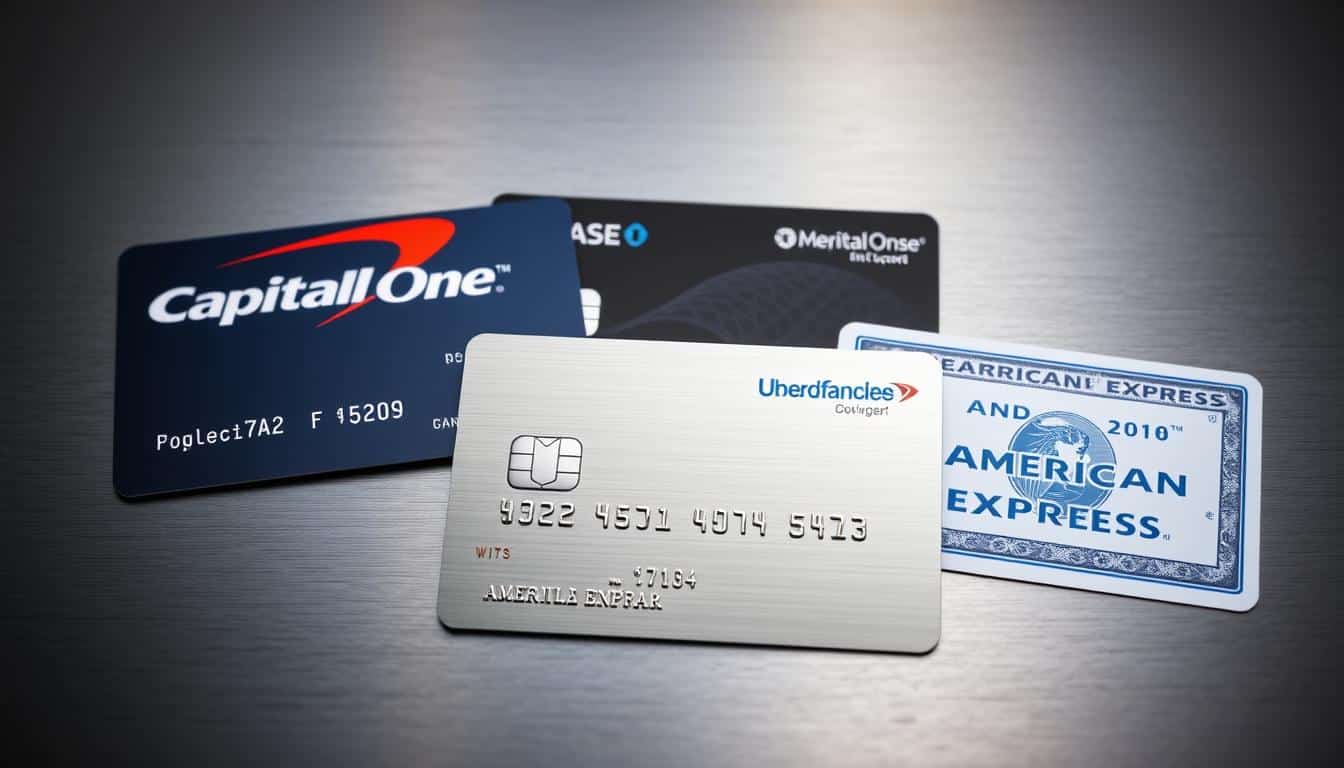As more people want to go to college, finding free degree options in the United States has become vital. This guide looks into ways to get a college education without the high costs. We cover different degrees, like associate, bachelor’s, and master’s, and how online education is changing the game.
Anúncios

Many schools are now making it easier to get a good education without breaking the bank. By learning about the requirements and available programs, you can figure out how to earn a degree without tuition fees. This is your first step towards a debt-free college experience.
Introduction to Free Degree Options
Recently, more people are talking about free college degrees. Free degree options show a big change in how we see college access. Schools and governments are working to make college free or cheaper for everyone. This could greatly change who gets to go to college in the U.S.
Anúncios
Now, many schools offer programs without tuition fees. This makes it easier for all kinds of students, especially those with less money, to go to college. As more people get this chance, they can follow their dreams and make the world better.

Benefits of Pursuing Free Degrees
Pursuing free degrees has many benefits that appeal to students. One key advantage is financial freedom. Without tuition costs, students can dodge the heavy student loan debt. This lets graduates use their money for important things like housing and savings.
Free degree programs create fair chances for all students. They help those from lower-income families reach their dreams. This makes the workforce more diverse and society more inclusive.
Another perk is better job chances. With a free degree, graduates find more job options and can thrive in their careers. The mix of no debt, fair education, and better jobs makes free degrees a great choice for students everywhere.
Free Degree Options in the United States
In the United States, many schools offer ways to go to college for free. These programs help cut down on student loans and open education to more people. Knowing what programs exist and who can get them is key to making the most of college funding.
Tuition-Free Programs Available
Lots of colleges and universities now provide free tuition. This helps with both school success and fairness. Noteworthy examples include:
- Community colleges giving two-year degrees or certificates for free to locals.
- Four-year schools with programs for students in need, covering their tuition.
- State programs that give scholarships for tuition to students who do well in school.
Eligibility Criteria for Free Degrees
What you need to qualify for these free degrees can vary a lot. Important aspects often look at:
- Financial need, judged by things like the FAFSA form.
- Where you live, with many offers only for people from that state.
- Personal details, like age or whether you’re going back to school or have lost a job.
Understanding these rules helps students figure out their financial aid options and what’s available for college funding.
Colleges and Universities Offering Free Tuition
Many colleges and universities in the United States offer free tuition. These programs help lower the cost of getting a college degree. They make it easier for people who might struggle to pay for college.
Notable Institutions with Free Programs
Some well-known universities are leading by offering free tuition. Princeton and Harvard provide full scholarships to students who need financial help. The University of Olivet is also doing great things to help its students.
State-Specific Tuition-Free Initiatives
State programs are key in making education free. For example, New Mexico’s Opportunity Scholarship covers tuition for its residents. Today, schools in over 30 states have joined the movement, helping students succeed.
Special Programs for Specific Demographics
There are special programs for students who face unique financial challenges. This includes help for Native American and undocumented students. These programs make it easier for them to go to college by offering essential financial support.
Tuition Assistance for Native American Students
Tuition assistance programs help Native American students with scholarships and grants. These help ease their financial stress. Organizations focus on making education more reachable for them. Some key programs are:
- The American Indian College Fund, which provides scholarships for Native American students enrolled in accredited colleges.
- The Bureau of Indian Education, offering various grants and programs dedicated to promoting academic success among Native individuals.
- State-specific initiatives that often include tuition waivers or reduced fees for Native Americans attending in-state colleges.
Programs for Undocumented Students
Support for undocumented students has grown, leading to new programs. These programs offer in-state tuition rates, financial aid, and scholarships. They help create a supportive environment. This allows undocumented students to study without heavy financial worries. Notable resources are:
- California’s Dream Act, allowing qualified undocumented students to apply for financial aid and scholarships.
- The Dream.US Scholarship, which provides financial support for undocumented students attending partner colleges.
- Community-based organizations offering resources and guidance for undocumented students navigating higher education.
Nursing and Medical Schools with Free Tuition
Nursing and medical schools now offer programs with no cost for education. This helps meet the high demand for healthcare workers. Many students can’t afford to become healthcare professionals due to high costs. But, free tuition at nursing and medical schools is changing this, making education accessible for more people.
Institutions Offering No-Cost Nursing Degrees
Free nursing education is now a reality at some schools. The University of Rochester School of Nursing, for example, has removed tuition fees for its programs. This move helps students learn important nursing skills without getting into debt. Other schools doing the same include:
- University of North Carolina at Chapel Hill
- Texas Tech University Health Sciences Center
- University of California, San Francisco
Tuition-Free Medical Schools and Their Impact
Some medical schools also offer free education. This is changing the future of healthcare. The NYU School of Medicine and Washington University in St. Louis are leaders in this. They’re making it easier for students to become doctors without the financial burden.
This focus on affordable education is important. It helps train more healthcare workers. Free tuition means students can worry less about money and more about learning. This prepares them to better serve communities everywhere.
Online Learning and MOOCs: A Path to a Degree
Online learning and Massive Open Online Courses (MOOCs) have changed the way we think about education. They offer access to many degree programs, ideal for students everywhere. MOOCs allow people to fit learning into their busy schedules with flexible options.
Learners from all walks of life can find coursework that fits their timetable. Universities team up with MOOCs for top-quality lectures and resources, making education easy to get. Platforms like Coursera, edX, and FutureLearn provide courses to boost knowledge and skills.
Many MOOCs are free, appealing to those looking to learn without steep fees. Some courses do offer certificates for a cost, but there are plenty of options that don’t. This blend of digital and traditional education is innovating how programs are delivered. It supports various ways people want to learn.
How to Apply for Free Degree Programs
Applying for free degree programs means following important steps. It’s key to understand the application process for free degrees. A vital step is filling out the FAFSA, which checks if you’re eligible for financial aid like grants.
Here are key steps in your application journey:
- Complete the FAFSA: Do this early to get the most aid. Remember deadlines for your state and school.
- Research Scholarships: Find scholarships that fit your background or achievements. This can boost your aid chances.
- Gather Documentation: You’ll need your Social Security number, tax returns, and asset information. Make sure everything is correct and current.
- Understand State-Specific Processes: Every state has its own rules for free degree applications. Know these to not miss funding opportunities.
- Follow Up: After applying, contact financial aid offices to check on your application and ask about more aid.
By sticking to these steps, students can confidently tackle the application process for free degrees. With careful planning and effort, they can unlock educational opportunities.
Conclusion
In summary, the higher education scene is changing a lot. Many places in the U.S. are helping students go to college without paying a lot. This guide talks about schools that do not charge and special programs for each state. It shows a real effort to make college more available to everyone.
The future of education looks welcoming and open to all. There are special programs for groups like Native American and undocumented students. There’s also strong support for tuition-free nursing and medical schools. It’s all about creating a diverse and skilled group of workers ready for tomorrow’s challenges.
As education keeps changing, backing these free learning chances becomes more crucial. Helping with free degree programs is good for students and makes our economy and communities better. Spending on education means building a brighter future for all of us.
FAQ
What are free degree options?
What types of degrees can I pursue for free?
What benefits do free degree programs offer?
How do I find tuition-free programs?
Are there scholarships for specific groups, like Native American students?
Which universities offer nursing degrees at no cost?
How do online learning and MOOCs contribute to free degree options?
What are the key steps in applying for free degree programs?
Content created with the help of Artificial Intelligence.



